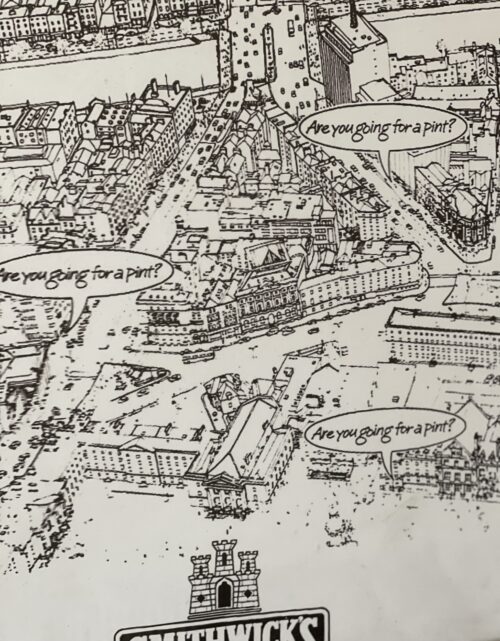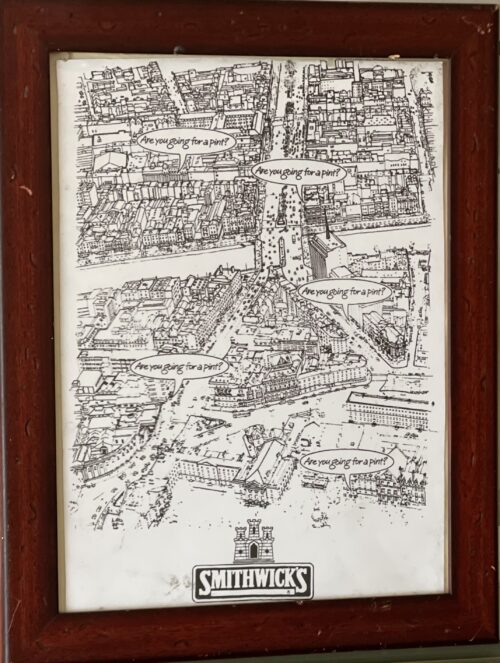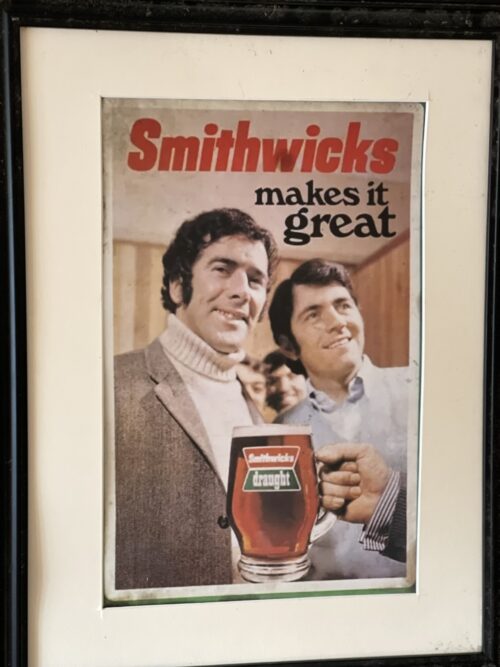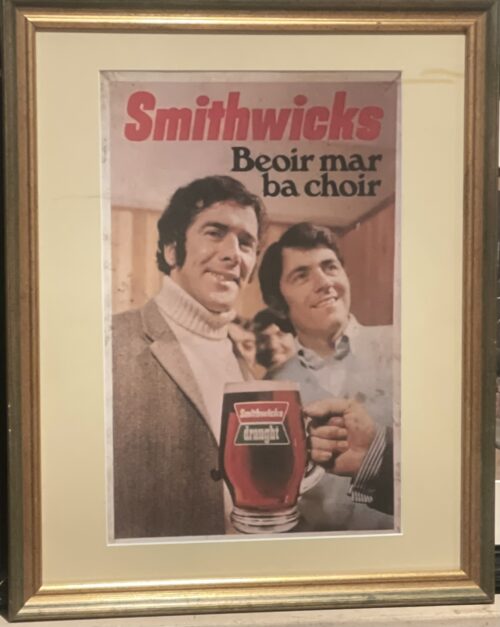Up until the early 1700s, brewing on a large scale was a rarity, this resulted in many small breweries springing up all around the country, with little or no consistency in the beer that was being produced. Back then, to guarantee that each pint was as good as the last, required brewing on a bigger, more exacting scale.
Enter Mr. Sullivan, a man of high morals, integrity and a good nose for great beer. Through his belief and hard work he established a brewery the likes of which had never been seen in Kilkenny. He only used the very best local ingredients and the very best brewing methods to ensure that every barrel of Sullivan’s Red Ale that left his brewery was as good as the one that had gone before.
Richard Sullivan was elected to represent the people of Kilkenny in the 1820s. This supposedly put one well-known Irish political figure’s nose well and truly out of joint – Daniel O’Connell.
After one particularly heated parliamentary quarrel, O’Connell even called a boycott of Sullivan’s Ale by the people of Kilkenny. But you’ll know if you’ve ever had a pint of Sullivan’s Red Ale in front of you that it can be very hard to resist, and the boycott was soon called off.
Despite this rocky start, Richard and Daniel went on to become firm friends. So good in fact, that when O’Connell was stripped of his seat in Parliament due to some underhand dealings, Sullivan was one of the few who had his back. He wrote to Daniel and offered him his seat to ensure that O’Connell’s Catholic Emancipation Act would get through Parliament.
1802
MIXING BUSINESS AND POLITICS
GOOD WILL, KINDNESS AND HOT SOUP
1880 was the year of ‘The Great Sullivan’s Brewery Fire’, a day that has gone down in legend among the people of Kilkenny.
The story goes that the Sullivan Family took the day off brewing to attend the funeral of a recently departed family friend in a Kilkenny hilltop chapel. Leaving a funeral before all the formalities were completed was the height of bad manners. The Sullivans could see the brewery ablaze from the hillside, but could do nothing about it.
As the first flames began to lick the outside of the brewery, the alarm was raised and the local fire brigade was sent for. But The Kilkenny Fire Brigade consisted of a few volunteers, a horse and a cart and a useless, leaking hose. Due to all their good deeds over the years, the Sullivans were a tremendously popular family in Kilkenny, so men, women and children from far and wide rallied together and grabbed the nearest buckets, pales and pots, filling them with water and battling the fire. Within an hour the fire was under control and the brewery was saved, all because a community came together.
1880
A COMMUNITY WORKING TOGETH









 47cm x 35cm
The old Smithwicks brewery is on the site of a Franciscan abbey, where monks had brewed ale since the 14th century, and ruins of the original abbey still remain on its grounds. The old brewery has since been renovated and now hosts "The Smithwick's Experience Kilkenny" visitor attraction and centre.At the time of its closure, it was Ireland's oldest operating brewery.
John Smithwick was an orphan who had settled in Kilkenny. Shortly after his arrival, Smithwick went into the brewing business with Richard Cole on a piece of land that Cole had leased from the Duke of Ormond in 1705. Five years later, John Smithwick became the owner of the land. The brewery stayed small, servicing a loyal local following while John Smithwick diversified.
Following John Smithwick's death, the brewery temporarily fell out of family hands. John Smithwick's great grandson, Edmond bought the brewery land back freehold and worked to reshape its future. Edmond concentrated on discovering new markets and successfully building export trade. Drinkers in England, Scotland and Wales developed a taste for Smithwick's brews and output increased fivefold.
As a result of substantial contributions made to St Mary's Cathedral, Edmond became great friends with Irish liberal Daniel O'Connell, who later became godfather to one of his sons. Edmond Smithwick became well known and respected by the people of Kilkenny who elected him town mayor four times.
In 1800, export sales began to fall and the brewing industry encountered difficulty. To combat this, the Smithwick family increased production in their maltings, began selling mineral water and delivered butter with the ale from the back of their drays.By 1900, output was at an all-time low and the then owner James Smithwick was advised by auditors to shut the doors of the brewery. Instead, James reduced the range of beers they produced and set out to find new markets. He secured military contracts and soon after saw output increase again. James' son, Walter, took control in 1930 and steered the brewery to success through the hardships of both World War II and increasingly challenging weather conditions.By January 1950, Smithwick's was exporting ale to Boston.Smithwick's was purchased from Walter Smithwick in 1965 by Guinness and is now, along with Guinness, part of
47cm x 35cm
The old Smithwicks brewery is on the site of a Franciscan abbey, where monks had brewed ale since the 14th century, and ruins of the original abbey still remain on its grounds. The old brewery has since been renovated and now hosts "The Smithwick's Experience Kilkenny" visitor attraction and centre.At the time of its closure, it was Ireland's oldest operating brewery.
John Smithwick was an orphan who had settled in Kilkenny. Shortly after his arrival, Smithwick went into the brewing business with Richard Cole on a piece of land that Cole had leased from the Duke of Ormond in 1705. Five years later, John Smithwick became the owner of the land. The brewery stayed small, servicing a loyal local following while John Smithwick diversified.
Following John Smithwick's death, the brewery temporarily fell out of family hands. John Smithwick's great grandson, Edmond bought the brewery land back freehold and worked to reshape its future. Edmond concentrated on discovering new markets and successfully building export trade. Drinkers in England, Scotland and Wales developed a taste for Smithwick's brews and output increased fivefold.
As a result of substantial contributions made to St Mary's Cathedral, Edmond became great friends with Irish liberal Daniel O'Connell, who later became godfather to one of his sons. Edmond Smithwick became well known and respected by the people of Kilkenny who elected him town mayor four times.
In 1800, export sales began to fall and the brewing industry encountered difficulty. To combat this, the Smithwick family increased production in their maltings, began selling mineral water and delivered butter with the ale from the back of their drays.By 1900, output was at an all-time low and the then owner James Smithwick was advised by auditors to shut the doors of the brewery. Instead, James reduced the range of beers they produced and set out to find new markets. He secured military contracts and soon after saw output increase again. James' son, Walter, took control in 1930 and steered the brewery to success through the hardships of both World War II and increasingly challenging weather conditions.By January 1950, Smithwick's was exporting ale to Boston.Smithwick's was purchased from Walter Smithwick in 1965 by Guinness and is now, along with Guinness, part of 




